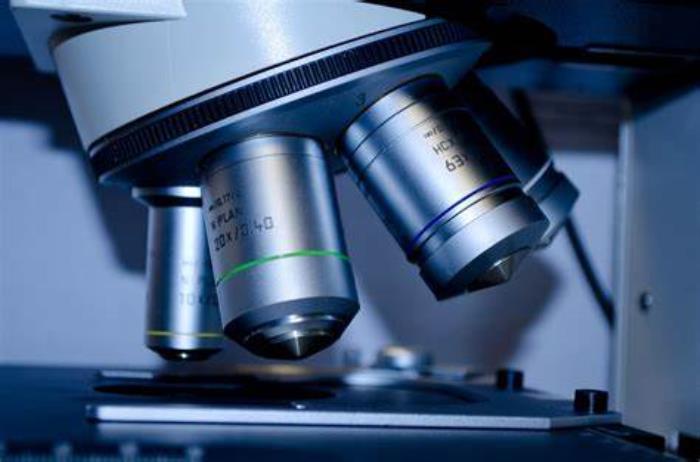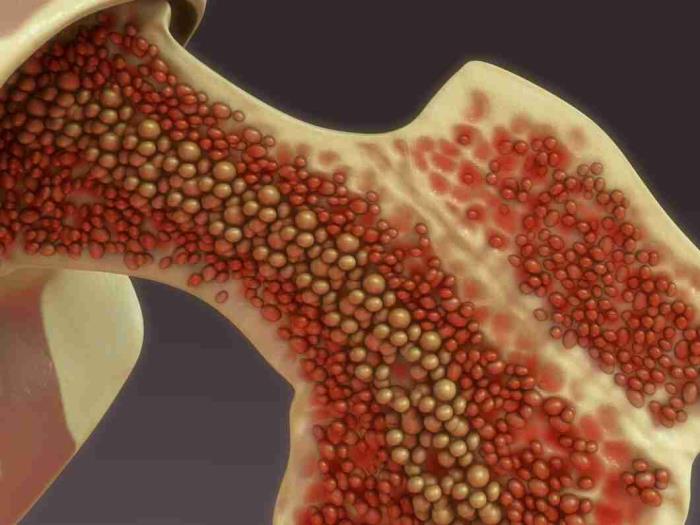Bone cancer refers to malignant tumors that originate in the bone tissue. It can be classified into two main categories: primary bone cancer, which starts in the bones, and secondary bone cancer, which spreads to the bones from other parts of the body. The most common types of primary bone cancer include osteosarcoma, chondrosarcoma, and ewing sarcoma. Understanding these distinctions is crucial for effective diagnosis and treatment.
The Importance of Accurate Diagnosis in Bone Cancer
Accurate diagnosis of bone cancer is essential for determining the appropriate treatment plan. Early detection can significantly improve patient outcomes. Physicians rely on various diagnostic tools, including imaging studies and laboratory tests, to assess the presence of cancerous cells. However, these methods may not always provide definitive results, making biopsies a critical component of the diagnostic process.
What is a Biopsy in the Context of Bone Cancer?
A biopsy is a medical procedure that involves the extraction of a small sample of tissue from the body for examination. In the context of bone cancer, biopsies are performed to confirm the presence of cancerous cells and to determine the specific type of cancer. This procedure is vital as it provides definitive evidence needed for accurate diagnosis and treatment planning.

Types of Biopsies Used for Bone Cancer Diagnosis
There are several types of biopsies used in diagnosing bone cancer, including: needle biopsy, open biopsy, and core needle biopsy. Needle biopsies involve using a thin needle to extract tissue, while open biopsies require a larger incision to access the tumor. Core needle biopsies use a larger needle to obtain a more substantial tissue sample. The choice of biopsy type depends on the tumor's location and size.
Indications for Performing a Biopsy in Bone Cancer Cases
A biopsy is indicated when imaging studies suggest the presence of a tumor, but further confirmation is needed. Symptoms such as persistent bone pain, swelling, or unexplained fractures may prompt the physician to recommend a biopsy. Additionally, if imaging results are inconclusive, a biopsy becomes essential in determining the nature of the lesion and guiding treatment options.
Preparing for a Bone Biopsy Procedure
Preparation for a bone biopsy typically involves a thorough medical evaluation, including a review of the patient's medical history and current medications. Patients may be instructed to avoid certain medications, such as blood thinners, prior to the procedure. Fasting may also be required if sedation is planned. Understanding the procedure and its implications can help alleviate patient anxiety.

The Bone Biopsy Procedure: Step-by-Step
The bone biopsy procedure generally follows these steps: First, the patient is positioned comfortably, and local anesthesia is administered to numb the area. For open biopsies, an incision is made to access the bone. For needle biopsies, the physician inserts a needle guided by imaging techniques. Once the tissue sample is collected, it is sent to a laboratory for pathological analysis.
Potential Risks and Complications Associated with Bone Biopsies
While bone biopsies are generally safe, there are potential risks involved. These may include infection at the biopsy site, bleeding, and damage to surrounding tissues. Patients should be informed about these risks and monitored for any adverse reactions post-procedure. Understanding these complications helps in making informed decisions regarding the biopsy.
Interpreting Biopsy Results in Bone Cancer Diagnosis
Biopsy results are crucial in confirming a diagnosis of bone cancer. Pathologists examine the tissue sample for cancerous cells and determine the type and grade of the tumor. This information is essential for staging the cancer and formulating an effective treatment plan. Patients should discuss their results with their healthcare provider to understand the implications fully.
The Role of Imaging Studies Complementing Biopsy Results
Imaging studies, such as X-rays, CT scans, and MRIs, play a complementary role in the diagnosis of bone cancer. These modalities help visualize the extent of the disease and guide biopsy procedures. Together with biopsy results, imaging studies provide a comprehensive view of the cancer, aiding in staging and treatment planning.

Biopsy as a Tool for Monitoring Treatment Response
In addition to diagnosis, biopsies can also be utilized to monitor treatment response in patients with bone cancer. By comparing pre- and post-treatment biopsy results, healthcare providers can assess the effectiveness of therapies, such as chemotherapy or radiation. This information is vital for adjusting treatment strategies as needed.
Patient Perspectives on Bone Biopsy Experiences
Understanding patient experiences with bone biopsies is important for improving care. Many patients report anxiety related to the procedure, often stemming from fear of pain or uncertainty about results. Providing clear information about what to expect can help alleviate these concerns and enhance the overall patient experience during the diagnostic process.
Challenges in Bone Biopsy Procedures
Bone biopsies can present several challenges, including difficulties in accessing certain tumor locations and the potential for obtaining inadequate tissue samples. Additionally, patients with underlying health conditions may face increased risks during the procedure. Addressing these challenges requires careful planning and coordination among the healthcare team to ensure patient safety.
Future Directions in Bone Cancer Diagnosis and Biopsy Techniques
Advancements in technology are paving the way for improved biopsy techniques in diagnosing bone cancer. Innovations such as image-guided biopsies and minimally invasive methods are enhancing precision and reducing complications. Ongoing research aims to further refine these techniques, ultimately leading to better diagnostic outcomes for patients.
Integrating Biopsy Results into Multidisciplinary Care for Bone Cancer
The integration of biopsy results into a multidisciplinary care approach is crucial for managing bone cancer. Oncologists, surgeons, radiologists, and pathologists collaborate to develop a comprehensive treatment plan based on biopsy findings. This collaborative approach ensures that patients receive the most effective and personalized care possible.
Patient Education and Support Following Biopsy Procedures
Post-biopsy education and support are vital for patients diagnosed with bone cancer. Providing clear information about biopsy results, potential next steps, and available resources can empower patients in their treatment journey. Support groups and counseling services can also play a significant role in helping patients cope with the emotional impact of a cancer diagnosis.
Differences Between Primary and Secondary Bone Cancer
Bone cancer can manifest in different forms, and understanding these distinctions is essential. Differences between primary and secondary bone cancer highlight how cancer originating in the bones (primary) differs from cancer that spreads to the bones from other organs (secondary). This article sheds light on their unique characteristics and treatment approaches.
Understanding the Importance of Bone Health Post Cancer Treatment
Post-treatment care plays a pivotal role in recovery and quality of life for cancer survivors. Understanding the importance of bone health post-cancer treatment focuses on strategies to maintain bone density, prevent fractures, and ensure long-term musculoskeletal health following cancer therapy.
Understanding the Cost Implications of Bone Biopsies
The cost of bone biopsies can vary based on the type of procedure, facility, and insurance coverage. Patients should be informed about potential costs and financial assistance options available to them. Understanding the financial implications is essential for making informed decisions about diagnostic procedures.
Best Bone Cancer Treatment in India
The Best Bone Cancer Treatment in India includes innovative approaches such as limb-sparing surgery, chemotherapy, and targeted therapies to effectively combat bone cancer.
Best Bone Cancer Hospitals in India
The best bone cancer treatment hospitals in india are equipped with advanced diagnostic tools and multidisciplinary oncology teams, ensuring comprehensive care and excellent outcomes for patients.
Bone Cancer Treatment Cost in India
The bone cancer treatment cost in india is affordable, offering world-class treatment options that cater to both local and international patients.
Best Bone Cancer Specialists in India
The Best Bone Cancer Specialists in India are highly experienced in diagnosing and managing bone cancer, providing personalized care plans to meet each patient’s needs.
FAQs About Bone Cancer and Biopsy Procedures
What are the common symptoms of bone cancer?
Common symptoms of bone cancer include persistent bone pain, swelling, and fractures that occur without injury. Other symptoms may include fatigue, weight loss, and fever. Early recognition of these symptoms is crucial for timely diagnosis.
How long does it take to get biopsy results?
Typically, biopsy results for bone cancer can take anywhere from a few days to a week. The timeline may vary depending on the complexity of the case and the laboratory's workload. Patients should discuss expected timelines with their healthcare provider.
Are there alternative methods for diagnosing bone cancer?
While imaging studies such as X-rays and MRIs are essential for initial evaluation, a biopsy remains the definitive method for diagnosing bone cancer. Alternative methods may aid in diagnosis but cannot replace the need for tissue confirmation.
What can I expect during recovery from a biopsy?
Recovery from a bone biopsy typically involves some soreness at the biopsy site, which can be managed with over-the-counter pain relief. Patients should follow their healthcare provider's post-procedure care instructions to ensure proper healing.
How do I prepare for a bone biopsy?
Preparation for a bone biopsy may include fasting, avoiding certain medications, and discussing any health concerns with your physician. Understanding the procedure can help alleviate anxiety and ensure a smoother experience.
Discover the Best Oncologists and Cancer Hospitals in India
When it comes to cancer treatment, finding the right specialist and hospital can make a significant difference in the outcome. In this blog, we have compiled a list of the top oncologists and cancer hospitals across major cities in India, ensuring that you have access to the best care available.
Top Oncologists in Major Cities
For those seeking expert oncologists, we have identified the best specialists in key cities:
Leading Cancer Hospitals
In addition to finding the right specialist, choosing the right hospital is crucial for comprehensive cancer care. Here are the top hospitals in major cities:
Get more indepth information on Cancer treatments and their costs
Conclusion
Finding the right oncologist and hospital is the first step in your cancer treatment journey. Explore the links above to learn more about the top specialists and hospitals in your area.